Nestled in the southern Italian region of Basilicata, the ancient city of Matera was once known as “the shame of Italy.” Residents lived in cave dwellings, or “sassi,” without electricity, running water, or basic sanitation. It wasn’t until the 1950s that the Italian government evicted the inhabitants and forced them to move into modern housing. Today, Matera has undergone a remarkable transformation, becoming a UNESCO World Heritage Site and a destination that draws visitors from around the world.
Matera is more than just a historic city—it’s an immersive experience. Walking through its narrow alleys, descending into its ancient caves, and marvelling at its rock-hewn churches transports visitors to another world.
About our guides
We don’t accept any payment or freebies for coverage or in return for recommendations. Our reviews are anonymous to ensure we get the same experience as any visitor.
Follow us on Instagram for frequent video stories, reels, photos, ideas and other information to inspire your stay in Puglia.
Matera: ‘Città dei Sassi’ (City of Stone) | Contents
- From Caves | “Christ Stopped at Eboli"
- To Culture | UNESCO and European Capital of Culture
- Getting Around
- The Rock Churches of Matera
- Beyond the Churches: Matera’s Other Attractions
- Five Dishes to Try in Matera
- Keepsakes | Crafts and Cucù
- Festa della Madonna della Bruna
- Getting to Matera
- Where we stayed
- Visit responsibly | sustainable travel suggestions
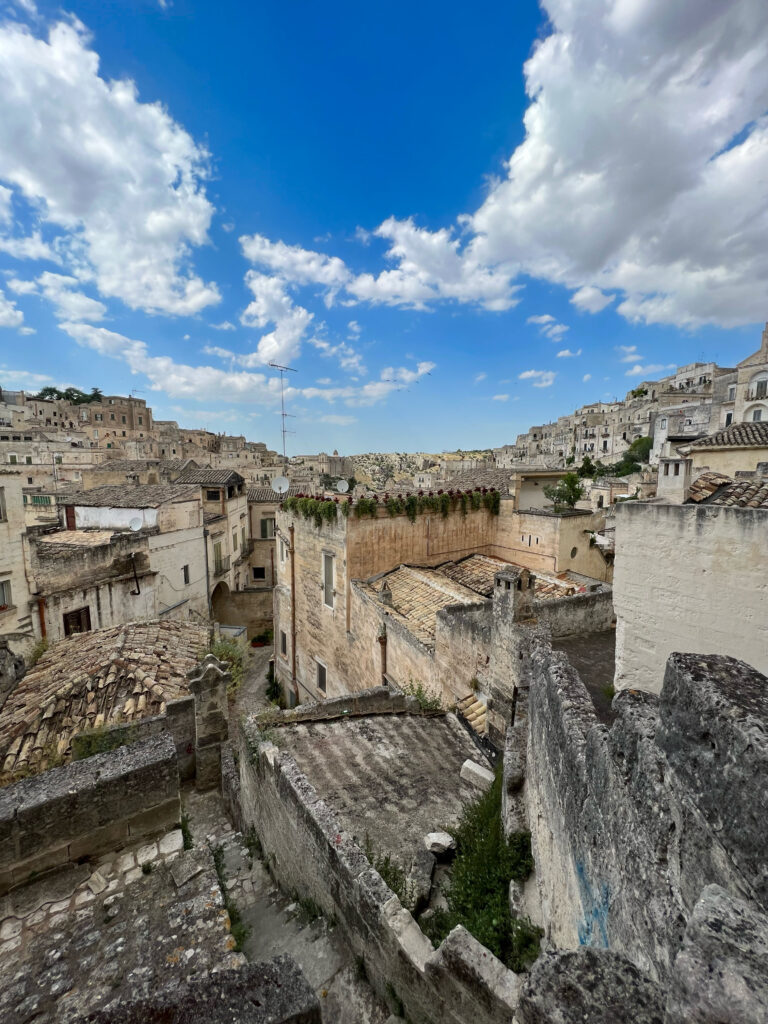
Matera is believed to be one of the oldest continuously inhabited cities in the world, with evidence of human settlements dating back to the Old Stone Age (palaeolithic era). Since 1993 the “Sassi” district, a complex of ancient cave dwellings carved into the rock, the town’s ancient cave-dwellings, and the Park of the Rock Churches have been designated a UNESCO World Heritage Site. Its unique landscape offers visitors a glimpse into an ancient way of life.
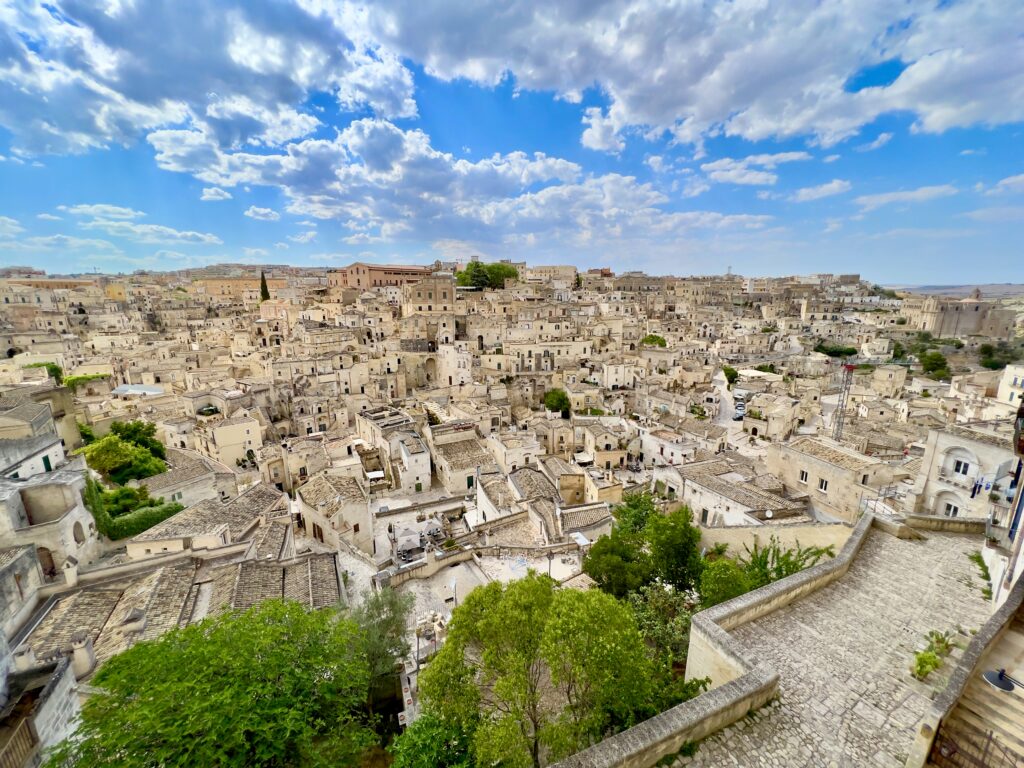
one of the most outstanding organised urban settlements ever created in the world, a real masterpiece of human creative genius and capacity to adapt
UNESCO World Heritage List citation for Matera, Italy
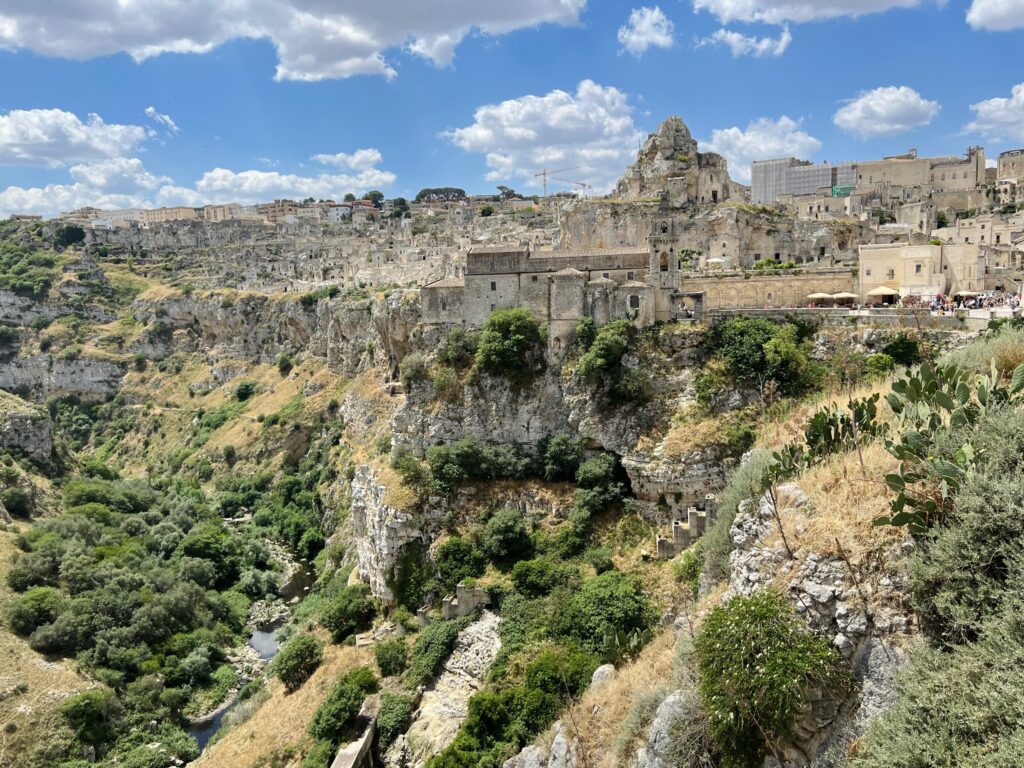
From Caves | “Christ Stopped at Eboli”
“Christ Stopped at Eboli”, a memoir by Carlo Levi published in 1945, caused a sensation. The book narrates the author’s exile in southern Italy during the fascist regime, a powerful testimony of poverty and social injustice in the area of Basilicata and the city of Matera. Levi describes the dire living conditions of the peasants in the region, isolated and marginalised from the rest of Italy. The title was taken from a local saying saying: that Christ never made it past Eboli, suggesting that the region was not only forsaken by God but also abandoned by the rest of the country.
He describes how his sister described Matera to him when she visited in 1936. A doctor, she had never met with poverty like this before, nor illnesses. Blindness caused by trachoma and what she took to be black fever, a disease usually confined to Africa. Some caves had no proper entrance. They were merely a hole in the ground with a trapdoor and ladder. Children lay on filthy rags, their teeth chattering from fever, sharing their dens with dogs, sheep, goats and pigs:
“I saw children with the faces of wizened old men, their bodies reduced by starvation almost to skeletons, their heads crawling w. ith lice and covered with scabs. Most of them had enormous, dilated stomachs, and faces yellow and worn with malaria”.
The book had a profound impact on the national and international perception of Matera and Basilicata, as it exposed the social and economic inequalities that existed in the area. The book also raised awareness about the primitive living conditions in the Sassi, the ancient cave dwellings in Matera that were inhabited by families in poverty.
The publication of “Christ Stopped at Eboli” led to a wave of cultural and social reforms in Italy. It sparked a national debate on the living conditions of the southern regions, which resulted in the establishment of the Cassa per il Mezzogiorno, a government agency that aimed to develop the impoverished south.
In Matera the impact of Levi’s book was significant. The city was declared a national shame, and the government implemented a plan to evacuate the Sassi and relocate the inhabitants to modern housing. The conditions in which they lived were deemed unfit for human habitation, and the government feared an outbreak of disease. Residents were given little notice, and many were forced to leave behind their homes and possessions. It destroyed the traditional way of life of the Sassi dwellers and their cultural heritage.
It wasn’t until the 1980s that efforts began to restore the abandoned sassi, and Matera started to gain recognition as a unique and important historical site.

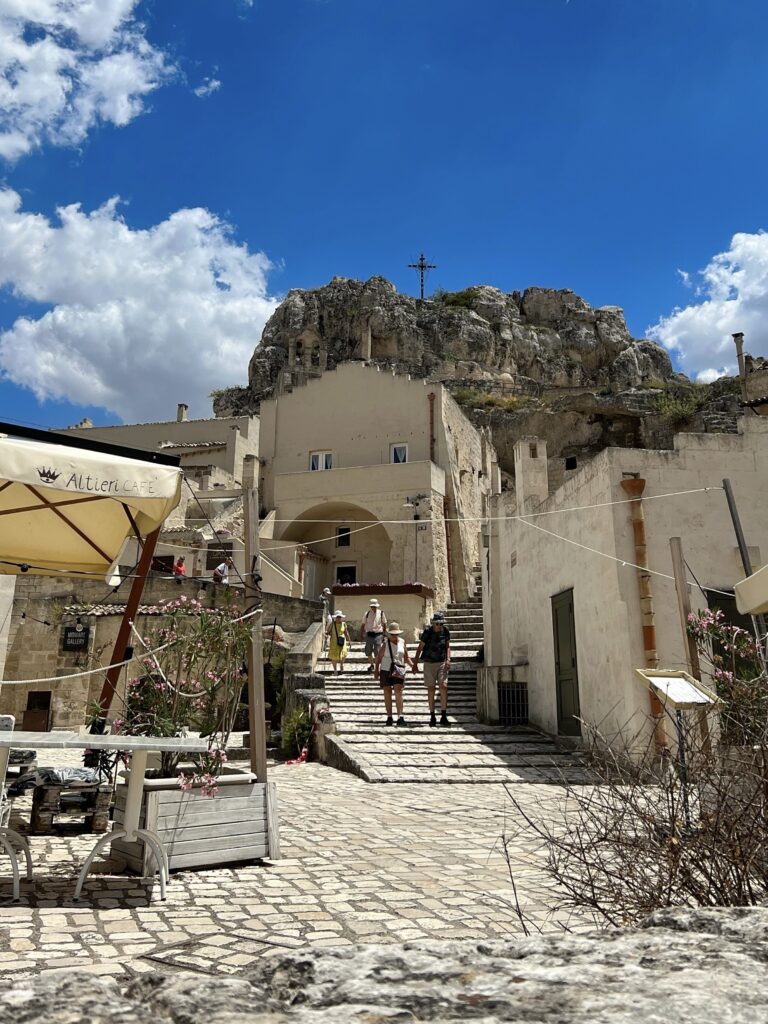
To Culture | UNESCO and European Capital of Culture
In 1993 the Sassi di Matera were declared a UNESCO World Heritage Site. The Sassi were restored and turned into a cultural destination. Today, the city attracts tourists from all over the world, who come to see the ancient cave dwellings and experience the rich cultural heritage of the region.
Becoming a UNESCO World Heritage Site in 1993 was a turning point for Matera. The recognition brought international attention to the city’s Sassi. The designation helped Matera preserve and restore its historic center, which had been neglected for decades. It also made Matera a cultural destination for tourists, attracting visitors from all over the world.
European Capital of Culture
In 2019, Matera was named the European Capital of Culture, a title it shared with Plovdiv, Bulgaria. This recognition further enhanced Matera’s cultural reputation and spurred the city’s cultural and artistic development. The designation brought investment to the city’s cultural sector, creating new job opportunities and revitalising the city’s economy.
Throughout the year, the city played host to a variety of events, including music festivals, art exhibitions, and theater performances, all showcasing the best of Matera’s artistic and cultural offerings.
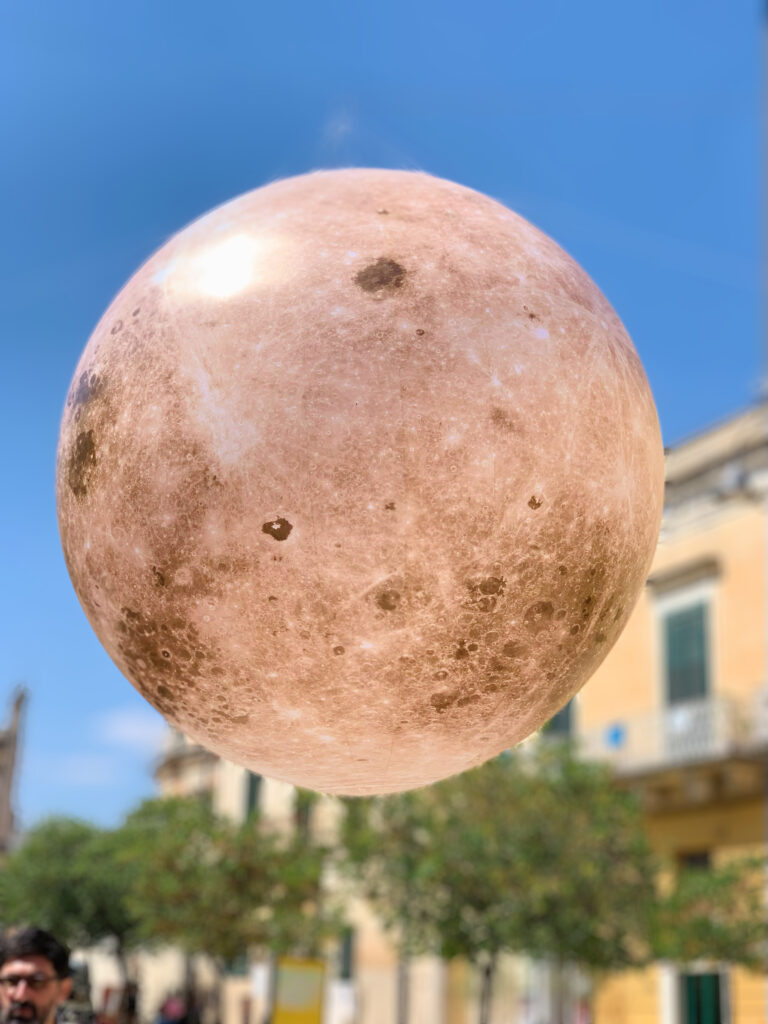
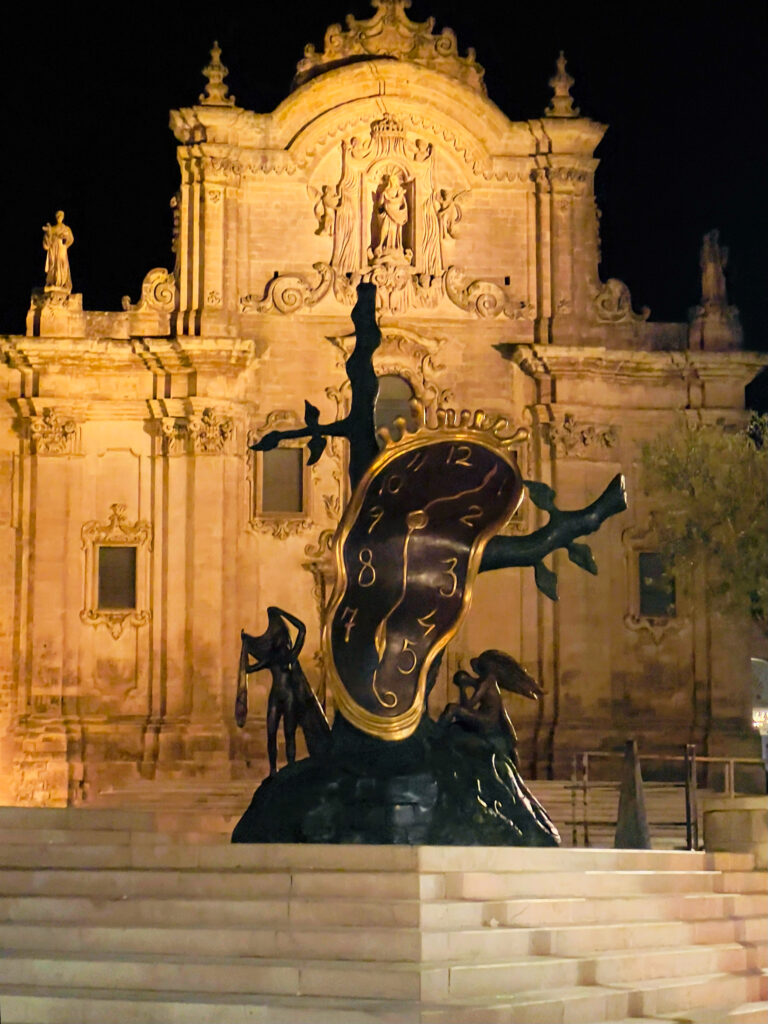
Being one of Europe’s two Capitals of Culture in 2019 really worked for Matera. We noticed a big difference in how the city held itself out. Not only did it feel a much more sophisticated travel destination in summer 2019 than it had in the months before taking on the honour, it also felt more confident; with a real belief in itself.
James Bond No Time To Die
Matera has even made its way onto the big screen, most notably featuring in the latest James Bond film, No Time to Die. The city’s breathtaking views serve as the backdrop for some of the film’s most iconic scenes, including a high-speed chase through the Sassi. For film buffs, visiting Matera is a chance to step into the world of James Bond and experience the city’s beauty first hand.
Although this may be the first appearance for Matera in the Bond collection, international movie buffs will be familiar with its rock dwellings built into the hills its arid, otherworldly surroundings and biblical landscape. Pier Paolo Pasolini set the story of Jesus’s life here in the 1964 classic The Gospel According to St Matthew. The 2003 Italian crime mystery thriller Io non ho paura (I’m Not Scared), directed by Gabriele Salvatores, was shot nearby. And Mel Gibson’s controversial 2004 biblical drama The Passion of Christ used numerous locations. Other biblical productions filmed here include King David (1985) Ben-Hur and The Young Messiah (both 2016).
Matera’s appearance in the James Bond film “No Time To Die” was definitely another milestone in the city’s cultural history.

Getting Around
Wandering around the Sassi districts, where cave-houses are built on top of one another and narrow streets lead into alleys, courtyards, stairways and squares, is a unique experience. But beware, there are many staircases and steps up and down. The steps can be unkind to your knees, and if you have accessibility requirements, jump to the sightseeing bus tour section below.
Its geography makes it relatively easy to get your bearings on the vertical. The trick is navigating the winding alleys and ways and managing the levels as you descend. A wrong turn can take you in a different direction and, although you’ll still come to Via Madonna delle Virtù, you might end up with an unexpected longer walk. Good luck with GPS – in the warren of Matera’s multi-level alleys it confuses the heck out of us!
Orientation
The Sassi districts of Matera are made up of two amphitheatres carved out of the rock. The Sasso Barisano on the north-west contains mainly palaces and traditional houses. The Sasso Caveoso to the south is mostly made up of cave-dwellings. Matera’s Civita district, overlooks the panorama of the Sassi, and contains the oldest inhabited group of buildings around the Cattedrale di Matera. The view is breathtaking, and as the day moves into evening, the colours and atmosphere change significantly. In the after sunset glow, the illuminated buildings make for a breathtaking cityscape.

Self-Guided Walking Tour
Our route covers many of the major sites and attractions in the Sassi of Matera and can be completed in about 2-3 hours depending on how much time you spend at each location. Note that the streets in the Sassi can be steep and uneven, so be sure to wear comfortable shoes. Bring water and sunscreen.
Keep in mind 4 key locations, for four parts of the journey. The rest you can work out between and around them. You don’t need to start at Piazza Vittorio Veneto. We have suggested the main square because of its proximity to the train station (and parking areas). You can start anywhere, and in either direction. If you are staying in the Sassi it might make sense to start at Piazza San Pietro Caveoso and walk up.
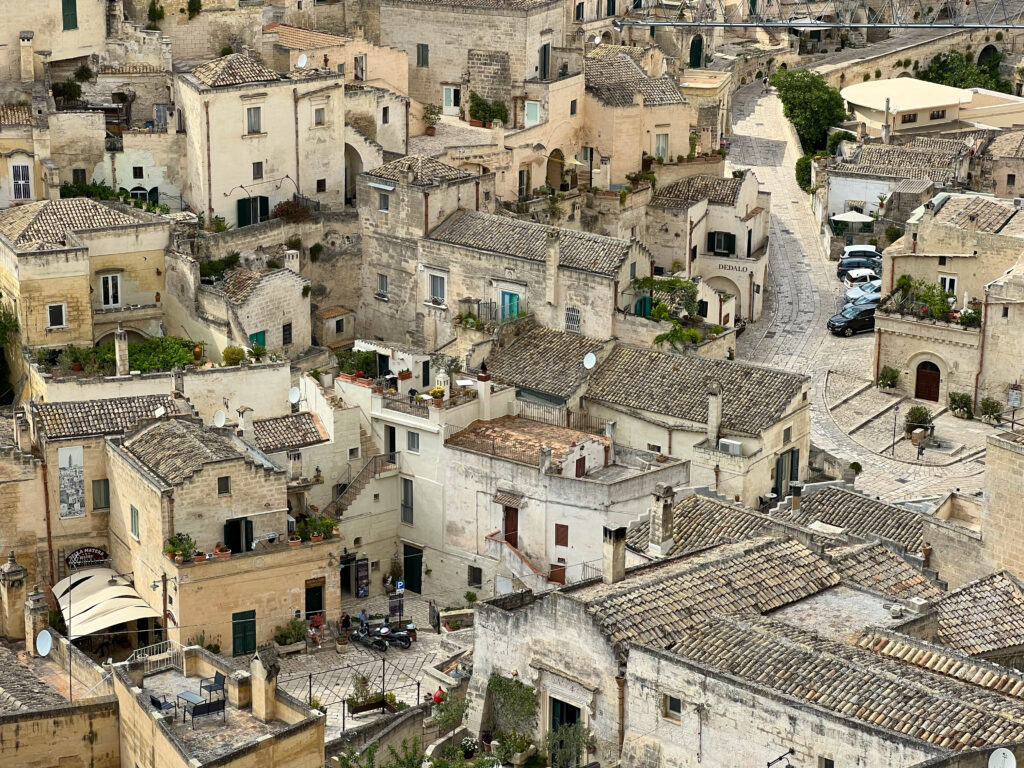
Our suggestion isn’t intended to be prescriptive, rather to give you a structure to base your walking around. The green lines on the screenshot below indicate the general direction, rather than the route, and connect the landmarks. The actual route between the locations meanders somewhat, all part of the fun.
- Piazza Vittorio Veneto (1) to the Piazza Duomo (2) for the Basilica (gentle climb, steeper towards the Duomo).
- Piazza Duomo (2) to Piazza San Pietro Caveoso (3) (incline down).
- Piazza San Pietro Caveoso (3) to Piazza Pascoli (4) (uphill).
- Piazza Pascoli (4) back to Piazza Vittorio Veneto (1) (level-ish).
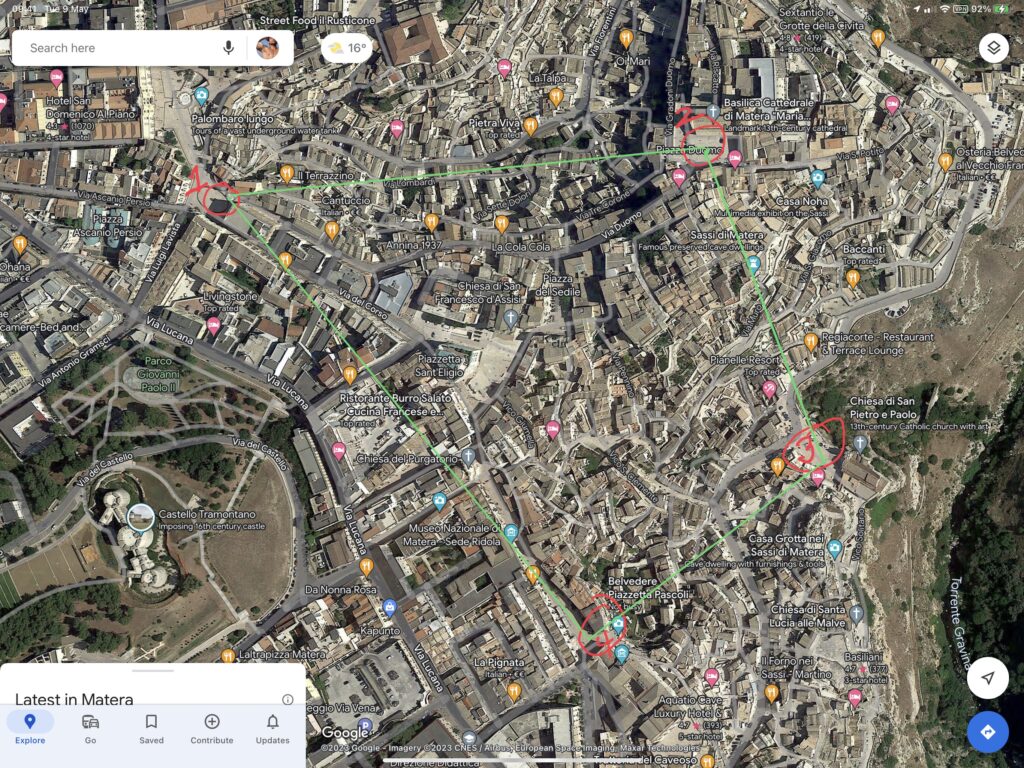
- Start at Piazza Vittorio Veneto (1). This is the main square in Matera and is a good starting point for your walk. At the top end of the piazza is “I Tre Archi” which has a wonderful panoramic view over the sassi. The Mondadori Bookstore is a nice visit, with some tasteful Matera themed gifts (notebooks, cards, calendars). You can pop in before or after refreshments at Bar Caffè Tripoli which has a nice seating area outside at the side of the piazza. For a cheap and cheerful lunch we’ve eaten pasta at Pasteggiando 1 – The Way Of Pasta (choose your pasta and separately your sauce). For an enjoyable dinner on the piazza we ate at La Finestra sui Sassi – Kappador (and thoroughly recommend the strascinate con salsiccia pezzente, mollica di Pane di Matera e peperone crusco, strascinate pasta with peasant sausage, breadcrumbs and sun dried crusci peppers). Nearby (between the piazza and the main train station) you will also find the mercato storico di Matera centrale food market well worth a visit.
- At the Post Office (Poste Italiane), before coming onto Piazza San Francesco, take a left to connect with Via delle Beccherie (continuing up onto the via Duomo to the Basilica Cattedrale di Matera (2)). Via delle Beccherie is one of the oldest in the Sassi and is lined with traditional stone houses and shops. You will pass by the Conservatory where you might here some classes taking place, either singing or musicians. If so, maybe take a moment to listen. You can have a coffee or refreshments at one of the bars on the Piazza del Sedile and soak up the atmosphere. Further along we sometimes stop off at the Monkey Drink House
- Continue up the via Duomo to Piazza Duomo and the Basilica Cattedrale di Matera.
- From here, depending on your energy levels and/or the heat you can opt for a long or short walk around the Via Madonna delle Virtù ending at Piazza San Pietro Caveoso (3). Either way it offers stunning panoramic views of the city and over the gravina. For the long walk head from the Duomo in this direction. For a shorter walk head in the direction of Piazza San Pietro Caveoso. Somewhere in between, head towards Casa Noha where you will find a multimedia exhibition in a cave dwelling. Be prepared to meander!
- Piazza San Pietro Caveoso: This square is located in the Caveoso district of the Sassi and features several historic buildings and churches, including the Chiesa di San Pietro Caveoso. From here you can enjoy the views, stop for a coffee or refreshments. Kiev Ristorante has nice terrace space on the square. We’ve enjoyed shopping for souvenirs at Peperoncino and had lunch at Altieri Cafè, for inexpensive local dishes including (the unfortunately named) crapiata, a plain bean stew made a little more interesting with some crushed cruschi that we sprinkled on top. For dinner we have enjoyed repeat visits to Ristorante Francesca for finer dining.
- Before heading up Via Bruno Buozzi towards Piazzetta Pascoli stop off for Chiesa Rupestre di Santa Maria di Idris built into the rocky hilltop, with its frescoes. As you continue up along Via Buozzi there are many places to eat or drink along the way. This is also a good place to go off the track and head into the heart of the Sassi, and walk around. For example head off Via Bruno Buozzi along Via San Pietro Caveoso in this direction. Or head up Ponte San Pietro Caveoso in this direction. In either case the aim is to connect with the route again along Via Domenico Ridola somewhere around here! But be sure to head back to Piazza Pascoli (4) for the panoramic view at Belvedere Piazzetta Pascoli. A great spot to take a break and enjoy the scenery and take some photos.
- If you have stuck to Via Bruno Buozzi to take you up, it connects with Via Casalnuovo. Turn right towards Charlie’s Speakeasy and continue along Via Casalnuovo towards the steps by Area 8 to take you up to the Piazza and onto Via Ridola. Look out on the left for a strange little house that looks like a creepy old museum, but as far as we can tell is still lived in. We haven’t been to the Speakeasy but we have had a fun late night out at Area 8.
- From Piazzetta Pascoli head along Via Domenico Ridola towards Piazza San Francesco where you find the Chiesa di San Francesco with Baroque architecture and artworks. Via Ridola is lined with shops, restaurants, and bars, and is a great place to stop for a coffee or snack. Not to be missed is the gelateria: I Vizi degli Angeli – Gelateria Artigianale. Even better if the lavender ice-cream is in season. If not don’t worry, the flavours are delicious and the ice-lollies are top. Especially the Aperol Spritz flavoured lolly.
- You will pass by the Chiesa del Purgatorio. Just before the church up along Via Alessandro Volta is Ocio Sandwich Room, perfect for a morning coffee and pastry, a light panino lunch or evening aperitivo. We had a fun night out here too.
- Continue along Via Ridola until you reach the Chiesa di San Francesco. Then head back to Piazza Vittorio Veneto.

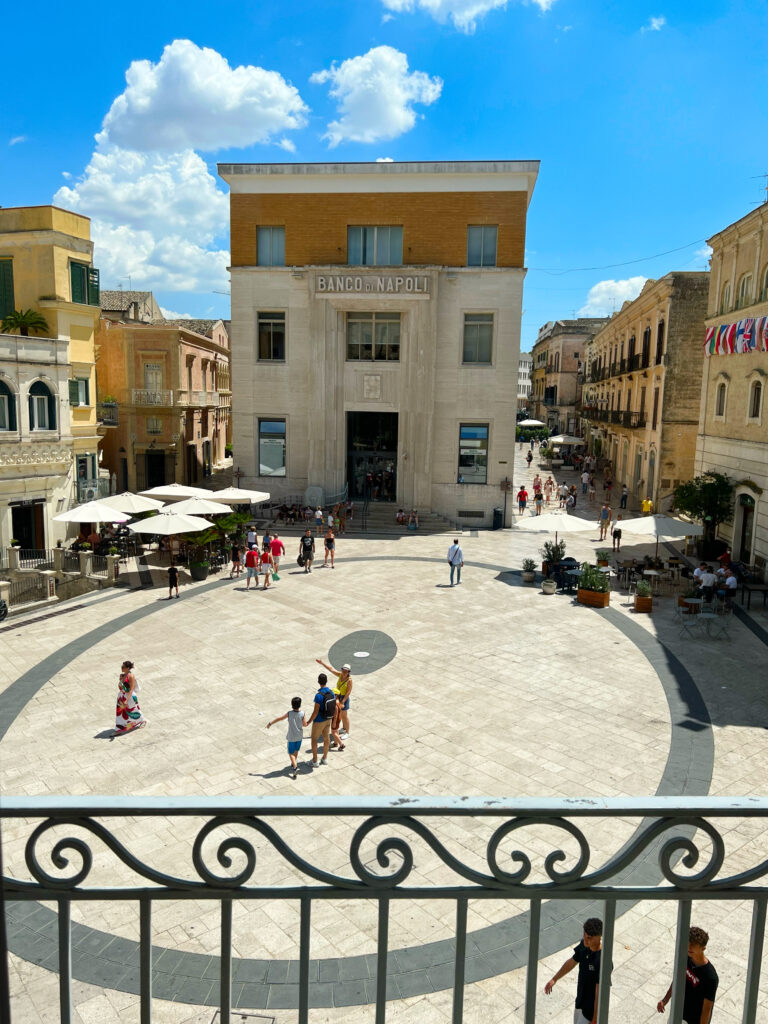
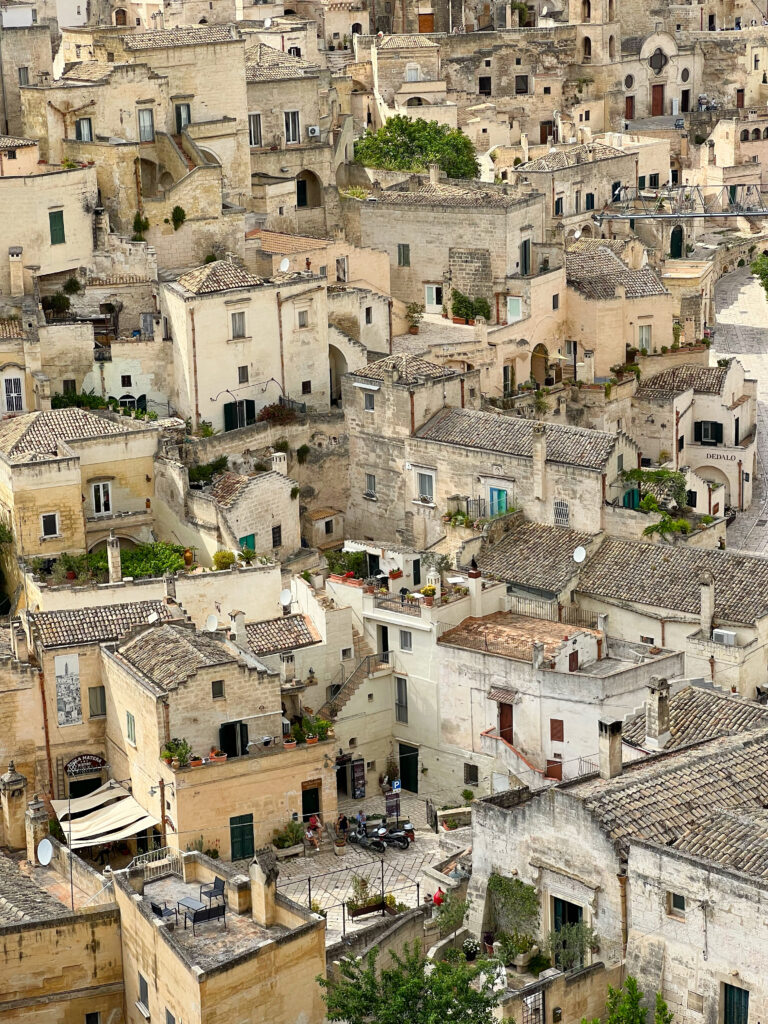
Guided Tours
Matera City Tour offer a guided walking tour. They also offer a sightseeing bus tour which we were up for, although we hadn’t booked and we missed the window of opportunity. At €15 for 90 minutes it looked very good value, and certainly convenient and easy. We recommend booking as the bus is relatively small and when we visited there were only a few circuits daily. It is not a hop-on hop-off tour, although we did see it stop at Piazza San Pietro Caveoso.

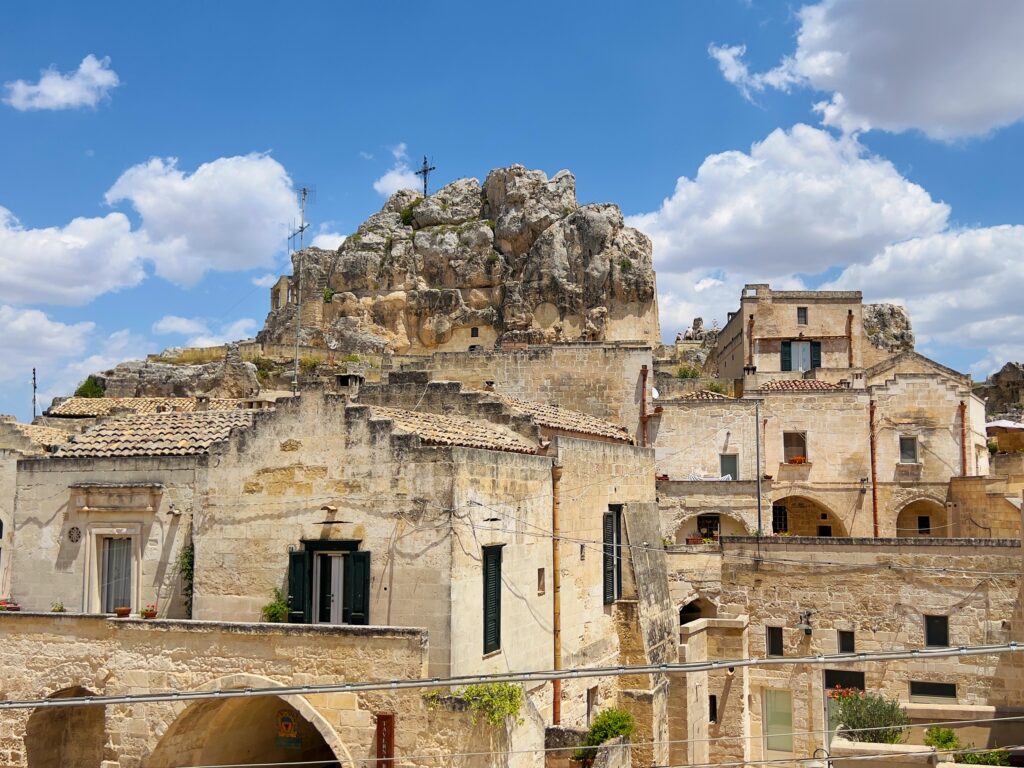
The Rock Churches of Matera
Carved into the limestone cliffs, its famous rock churches—some dating back to the early medieval period—offer a fascinating glimpse into centuries of spirituality, art, and architecture. Whether you’re exploring the ancient Sassi districts or venturing into the wild beauty of the Parco della Murgia Materana, Matera’s rock-hewn churches are an unmissable part of any visit.
Rock Churches in the Sassi Districts
Many of Matera’s rock churches can be found within the Sassi Caveoso and Sassi Barisano districts, accessible on foot.
- Santa Lucia alle Malve: A former Benedictine monastery used for worship until 1283, this church is famous for its well-preserved frescoes, including a moving depiction of the Madonna and Child.
- Santa Maria de Idris and San Giovanni in Monterrone: These twin churches, carved into a rocky spur overlooking the Sassi, boast frescoes spanning several centuries. Santa Maria de Idris, first mentioned in the 14th century, is named after ancient water collection tanks, while San Giovanni in Monterrone features impressive medieval wall paintings.
- Madonna delle Virtù and San Nicola dei Greci: This large monastic complex, an exquisite example of “negative space architecture,” has been repurposed as a contemporary art exhibition space.
- San Pietro Barisano: The largest rock-hewn church in the Sassi, San Pietro Barisano dates back to the 11th century and houses a hidden crypt that once served as a burial site.
- San Pietro e Paolo al Caveoso: Perched dramatically above the Gravina River, this 13th-century church features a striking Baroque façade and an 18th-century wooden altar.
Other Notable Rock Churches
- Chiesa di Santa Barbara: With its three-part interior—narthex, presbytery, and apse—this Byzantine church offers breathtaking views over the Gravina gorge. The fresco of Santa Barbara is particularly notable.
- Convicinio di Sant’Antonio: A complex of four interconnected churches—San Primo, Sant’Egidio, San Donato, and Sant’Antonio Abate—surrounding a shared courtyard, all featuring remarkable frescoes.
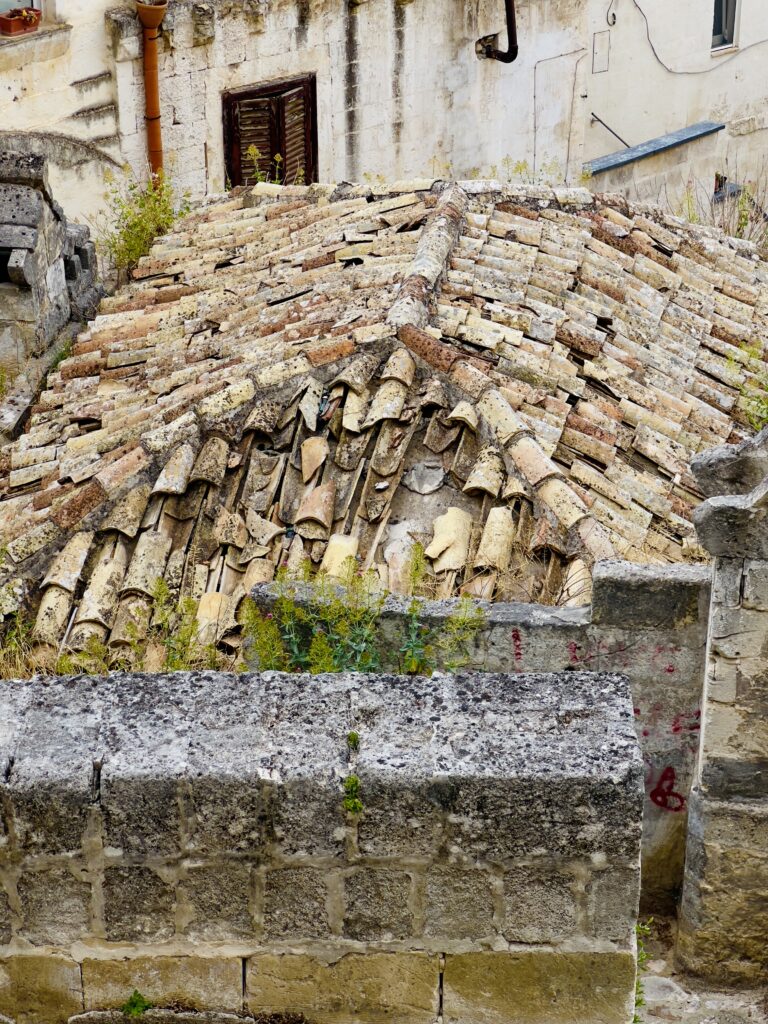
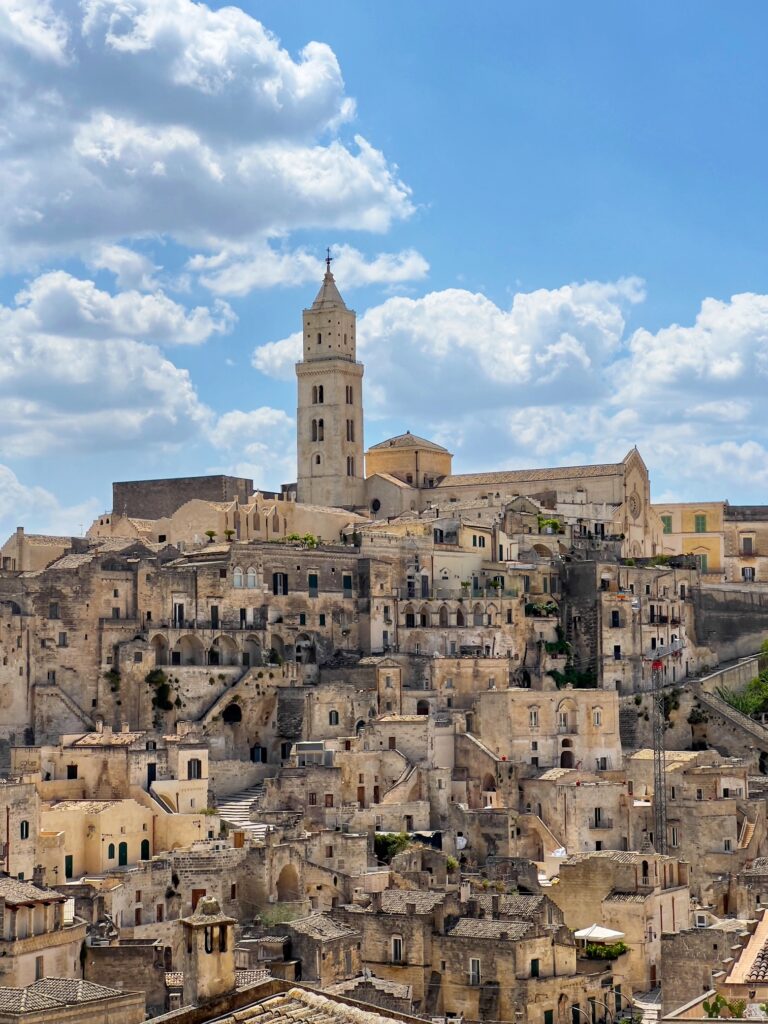
Churches in Matera’s Historic Centre
Beyond the Sassi, Matera’s historic centre is home to several magnificent churches, each with its own unique character.
- Matera Cathedral: A striking 13th-century Romanesque cathedral, its façade is adorned with biblical symbols, and inside, visitors can admire a stunning medieval fresco of the Last Judgment. The cathedral is dedicated to the Madonna della Bruna and Sant’Eustachio, the patron saints of the city. The main portal contains a statue of the Madonna della Bruna, while on the sides you can see a statue of Saint Peter, to the right, and Saint Paul, to the left, together with a bas-relief of Sant’Eustachio. The Romanesque rose window, showing a wheel of fortune, and the square-base tower bell are worth seeking out. The three naves are characterised by a variety of capitals, dating back to the foundation of the Church.
- Church of San Francesco d’Assisi: Built over an ancient underground church, this 18th-century Baroque gem houses paintings by Neapolitan artists.
- Church of Purgatorio: A fascinating 18th-century church featuring eerie death-themed decorations on its façade and a stunning wooden dome.
- Church of San Giovanni Battista: One of Matera’s best-preserved examples of Pugliese-Romanesque architecture, with a beautifully carved entrance and medieval features.
- Church of San Domenico: Located in Piazza Vittorio Veneto, this church boasts an exquisite 13th-century rose window depicting the wheel of fortune.
- Church of Santa Chiara: An elegant 18th-century church with intricate geometric and botanical decorations.
- Church of San Francesco di Paola: This church holds great significance during the annual Madonna della Bruna festival.
The Park of the Rock Churches
The Parco della Murgia Materana, also known as the Park of the Rock Churches, is home to over 150 cave churches, many adorned with stunning frescoes and architectural elements such as apses, capitals, and quatrefoils. These churches, scattered on both sides of the Gravina River, tell the story of a long tradition of monasticism and religious devotion.
The Crypt of the Original Sin
Just outside the city, in Pietrapenta, lies the Cripta del Peccato Originale—often dubbed the “Sistine Chapel” of rock churches. Dating back to the 8th or 9th century, its stunning frescoes, painted by an unknown artist called the Painter of the Flowers of Matera, depict biblical scenes, including the Creation and the Original Sin. Once a place of Benedictine worship, this crypt is a must-visit for art and history lovers.
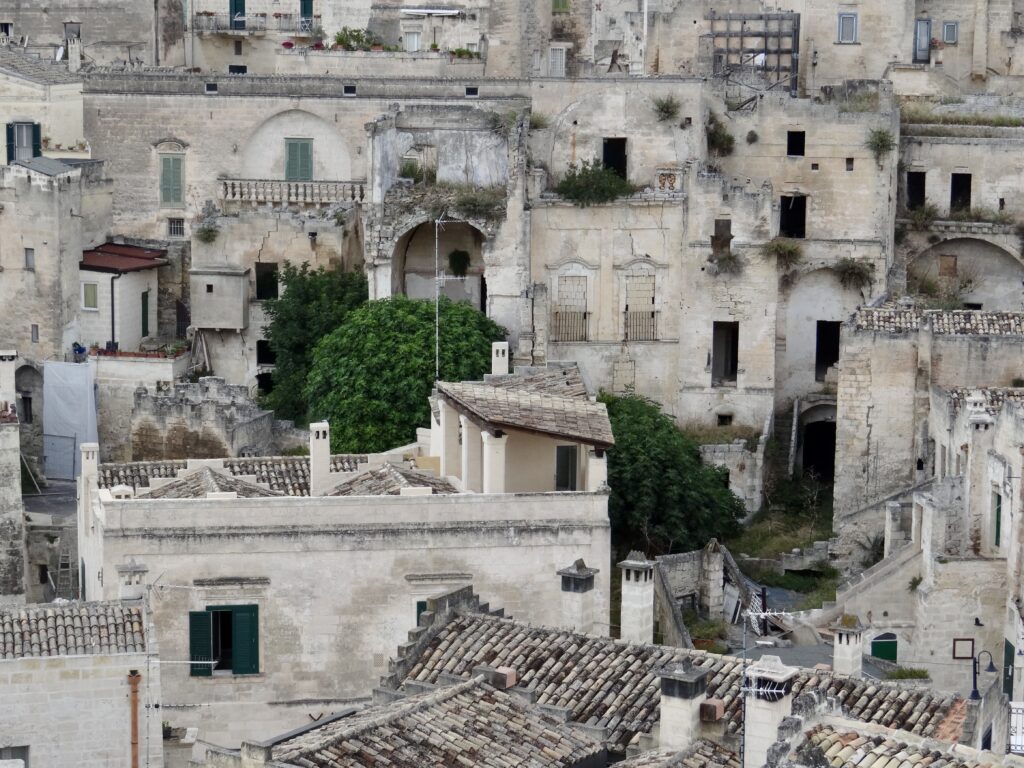
Beyond the Churches: Matera’s Other Attractions
The Cisterns of Palombaro Lungo
The Sassi are provided with a water system that collects both rainwater and spring waters; in the past, it was made up of a network of channels and cisterns. Hidden beneath Piazza Vittorio Veneto lies the Palombaro Lungo, a vast underground water cistern carved out of the rock that once supplied the city with fresh water. Now open to visitors (with daily tours in English), this cavernous reservoir showcases Matera’s ingenious historical water management system.
Cave-House and Museum of Peasant Culture
Step into the past at the Cave-House Museum, where traditional Sassi dwellings have been reconstructed to show how families lived in Matera until the 1950s. The Museum of Peasant Culture, housed in an 18th-century cave, further explores the region’s rural heritage.
National Museum of Matera
For archaeology enthusiasts, the Domenico Ridola National Museum offers a journey through Matera’s prehistoric past, featuring artefacts from Neolithic villages and exquisite Greek pottery.
Palazzo Lanfranchi and MUSMA
Art lovers will enjoy the Palazzo Lanfranchi, home to Matera’s National Museum of Medieval and Modern Art, featuring works by Carlo Levi. Meanwhile, the Museum of Contemporary Sculpture (MUSMA), set within a labyrinth of caves, is a stunning showcase of modern sculpture in an ancient setting.
Casa Ortega and Casa Cava
The Casa Ortega celebrates the work of Spanish artist José Ortega, whose papier-mâché bas-reliefs highlight the link between art and craftsmanship. Nearby, the Casa Cava, a unique rock-cut auditorium, hosts concerts and cultural events.
For food lovers, Matera is a paradise of authentic flavours and time-honoured recipes. The city’s most famous staple is Matera bread, a DOP-certified delicacy with a uniquely fragrant aroma and a rustic shape reminiscent of the rolling Murgia landscape. Made with high-quality durum wheat and natural yeast, this bread is baked to perfection in wood-fired ovens, giving it a crisp crust and a soft, airy interior.
Five Dishes to Try in Matera
Local ingredients such as wheat, beans, and wild greens feature prominently in Matera’s dishes, which are simple yet flavorful. The region is also renowned for its wine production, with several local wineries offering tastings and tours. The region’s wine, Aglianico del Vulture, is made from the Aglianico grape and is renowned for its full-bodied flavor and tannins.
Pignata
A hearty stew made with meat, potatoes, onions, and tomatoes, cooked in a clay pot over an open fire.
The Pignata takes its name from the earthenware “jug” in which the sheep is cooked. The meat, first blanched in boiling water to melt off excess fat, is put into the jug together with pieces of pecorino and sausage with vegetables, aromatic herbs and wild chicory. Once the jug is filled, the Pignata is sealed with the bread dough and baked for several hours, traditionally at the side of the open kitchen fire. The stew is served hot on the plates accompanied with fresh bread.
Cialledda
A salad made with stale bread, tomatoes, onions, and cucumbers, dressed with olive oil and vinegar.
Cialledda is a bread-based dishes found on most restaurant menus all year round, often with polpette – bread dumplings or meatballs, the meatballs – cooked in tomato sauce. The summer version uses up stale bread, chopped, soaked and kneaded by hand with tomatoes, adding seasonable vegetables, onions and olives all seasoned with extra virgin olive oil and oregano. In winter the bread is soaked in hot water. Seasonal vegetables and sometimes a poached egg are placed inside.
Fave and cicorielle
A very simple dish; broad bean purée (made from dried fava beans), with braised chicory. Usually made with foraged wild cicorielle, the bitter vegetables enhance the sweet taste of the beans. The two flavours are enhanced by the fruitiness of local extra virgin olive oil generously drizzled on top.
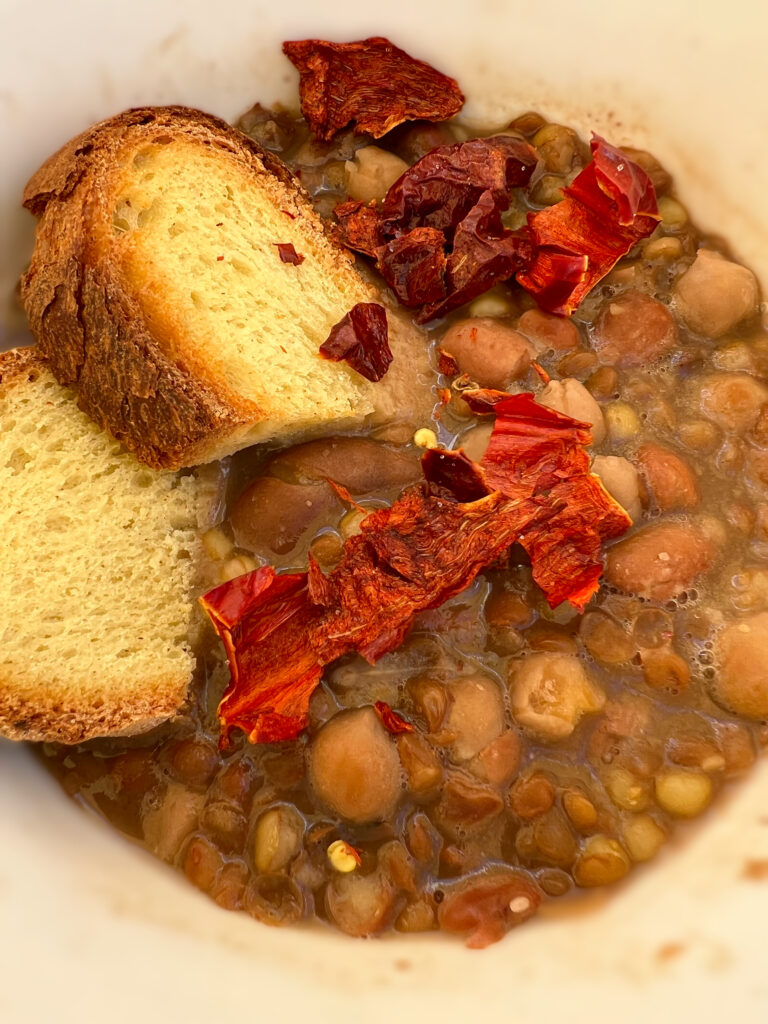
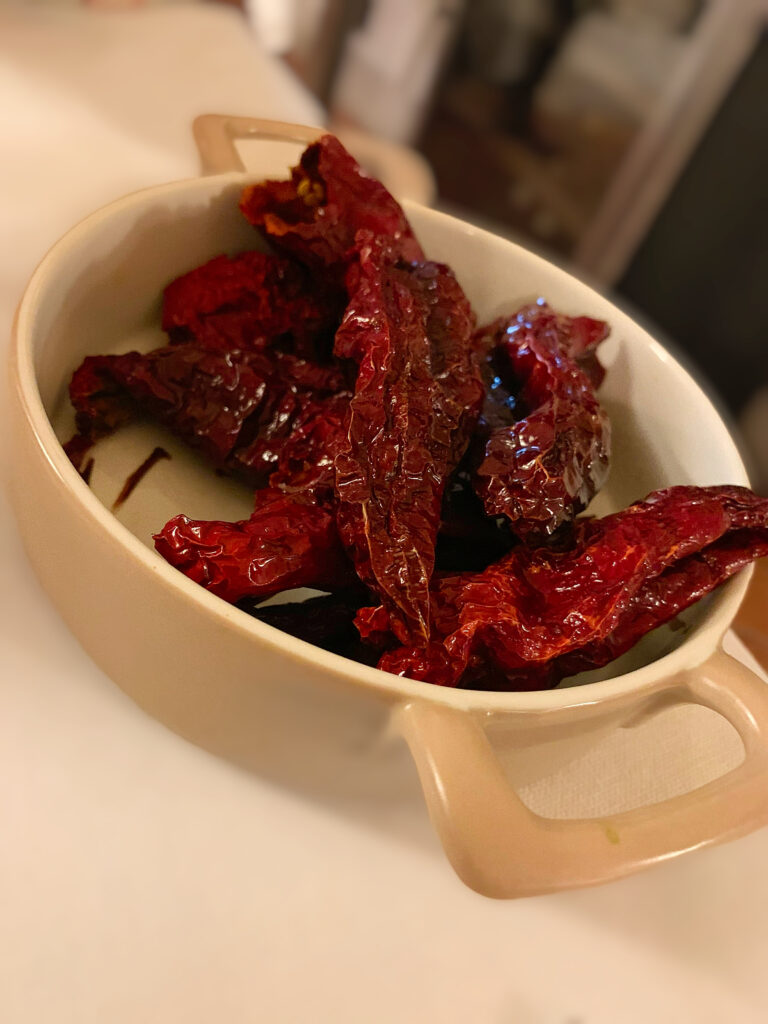
Crapiata
Between a soup and stew of legumes and cereals. It can be a little bland, so be sure to order some cruschi to sprinkle on top. The festival of Crapiata falls on the first of August and is still held today in some neighborhoods of the Sassi.
Peperoni Cruschi
Sun-dried peppers that are fried and served as a snack or used to add flavor to dishes. These are not chilli hot, but have a deep, warm summer taste. Good enough to snack on their own as an aperitivo.
In conclusion, Matera’s transformation from a place of shame to a pride of Italy is nothing short of remarkable. Visitors to the city can now explore its unique history, sample its traditional cuisine, and marvel at its stunning architecture. Whether you’re a history buff, a foodie, or simply looking to soak up the beauty of southern Italy, Matera is a destination that will leave you enchanted and inspired.
Keepsakes | Crafts and Cucù
The city’s craftsmanship is deeply rooted in history, with skills and techniques passed down through generations. Visitors will find a remarkable variety of handmade goods, from intricately carved stone and tufa sculptures to finely crafted wooden artefacts, exquisite ceramics, and delicate papier-mâché creations.
One of the most distinctive traditional crafts is the ‘cucù’—handmade terracotta whistles, often shaped into animals and believed to bring good luck. Another fascinating item is the ‘bread stamp,’ a carved wooden tool historically used by families to mark their loaves before baking them in the communal ovens of Matera. These stamps, often personalised with initials or symbols, reflect an age-old tradition that speaks to the city’s close-knit community spirit. The art of papier-mâché is also particularly significant in Matera, most famously showcased in the grand float of the Madonna della Bruna, a key element of the city’s most important annual festival.
Festa della Madonna della Bruna
Every year on 2nd July, Matera celebrates the Festival of theMadonna della Bruna, honouring its patron saint. This tradition, steeped in both religious devotion and folkloric rituals, has been observed since 1389.
The day commences at dawn with the evocative “Procession of the Shepherds” (“Processione dei Pastori”), a heartfelt tribute that winds through the historic Sassi districts, filling the early morning with a profound sense of community and spirituality.
At midday, the atmosphere intensifies as the “Knights of Santa Maria della Bruna” escort the revered statue of the Madonna and Child from Matera’s Cathedral to the Church of the Annunziata in the Piccianello district. This procession symbolises the Madonna’s visitation and is a central element of the day’s ceremonies.
As night falls, the city reaches a crescendo of festivity. An elaborately crafted papier-mâché float, designed annually by skilled local artisans, parades the Madonna through Matera’s illuminated streets. The journey culminates in the central square, where, in a dramatic and symbolic act, the float is dismantled by the crowd, each person striving to secure a fragment as a cherished token of good fortune.
The origins of the festival are shrouded in legend. One tale speaks of a mysterious woman who, after being offered a ride into Matera by a local farmer, revealed herself as the Virgin Mary before vanishing, leaving behind a statue. This statue was then transported into the city on a triumphal chariot, marking the inception of the annual celebration.
The term “Bruna” itself has several interpretations. Some suggest it derives from the Lombard word “brùnja,” meaning armour, symbolising protection. Others believe it references the town of Hebron, linked to the biblical Visitation, or perhaps denotes the darker complexion of the Madonna’s representation.
Getting to Matera
Matera is easily accessible from Bari, only 60km away. Travelers can take a train or bus from Bari to Matera, with both options offering stunning views of the Italian countryside along the way. The journey takes approximately two hours by train (with a change at Altamura). Sometimes the bus can be faster. here are connections direct from Bari airport or from Bari Centrale station.
Matera Centrale is the main train station. It is very central, and an easy walk of just over 5 minutes to Piazza Vittorio Veneto. It’s a modern, efficient train station.
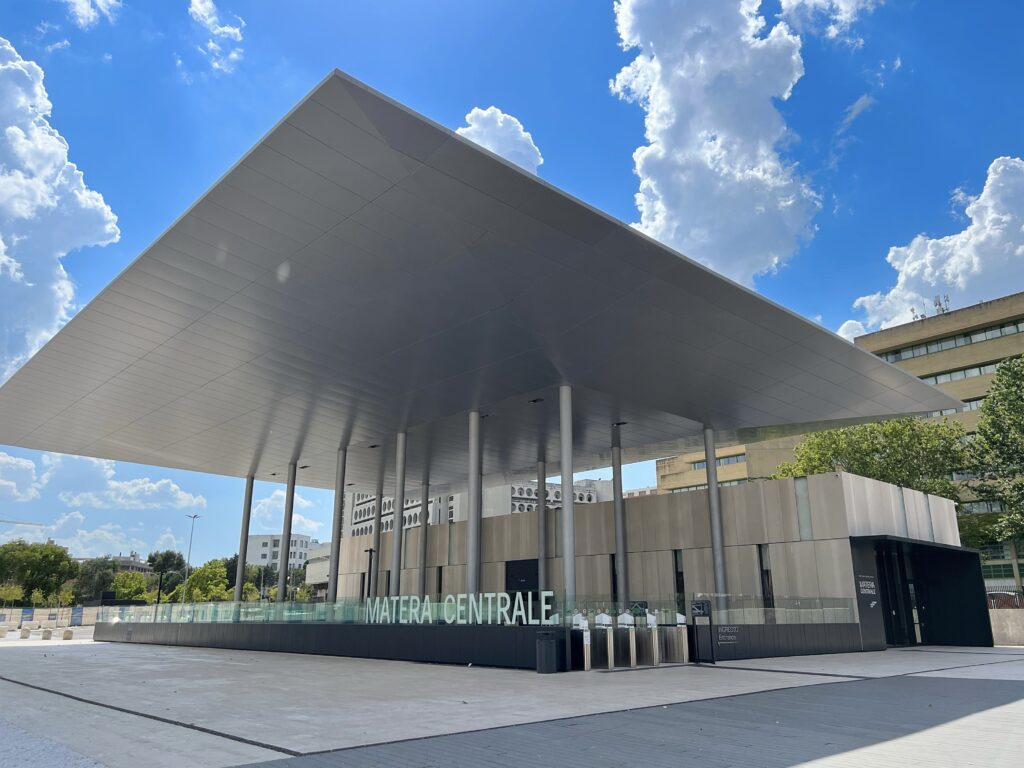
By road the journey from Bari to Matera is even more straightforward (and quicker). It takes just over 45 minutes by car from Bari airport and just under an hour from central Bari along the SS96, good dual carriageway all the way until you are almost in Matera. If you are coming from the south of Bari you will take exit 7B on the SS16 Bari circular to Modugno and after 5km take the SS96 ramp on the right lane for Altamura/Matera.
Coming at Matera from further south there are more scenic (but longer) cross country routes, via Gioia del Colle for example. If you get stuck behind a truck or slow traffic, overtaking might not be easy. Be prepared for frustration, and unforgiving Italian drivers behind you!!!
From Lecce via Brindisi and Taranto the journey will take just around two and a quarter hours. An hour less from Taranto. The majority of that journey is dual carriageway except for the stretches between Taranto and the toll road to Matera, and when you come off the toll road until Matera. Expect the same overtaking frustrations!
Where we stayed
Matera is on our doorstep and we can easily plan a day trip. But on occasion we have stayed over.
We have stayed at Sant’Angelo Luxury Resort. Set in the Sassi di Matera cave network, with exposed-stone rooms carved into the rock. Central location with a cool bar/restaurant and terrace with panoramic views. Expensive but great for a special occasion.
We also stay at B & B Matera Vittorio Veneto Luxury Rooms Vittorio Veneto – Matera Luxury Rooms. The rooms do not have the character of staying in the sassi, but they are modern, clean and functional and have a great location (an easy walk from the train station and for nearby parking), with rooms looking onto the picturesque Piazza Vittorio Veneto.
Visit responsibly | sustainable travel suggestions
Matera is a city that truly has something for everyone. Its rich history, stunning natural beauty, and vibrant cultural scene make it a destination that should not be missed. Whether you’re a history buff, a film fan, or simply looking to soak up the beauty of Italy’s southern region, Matera is a city that will leave you captivated and inspired.
As a tourist hotspot and cultural hub (cruise ships that stop in Bari and Taranto increasingly offer day trips), it is important to promote sustainable tourism practices to prevent over-tourism and minimize the negative impact on the environment and local communities. Here are some suggestions for visiting and enjoying Matera sustainably:
- Visit during the off-season: Consider visiting Matera during the off-season, which is typically from October to April, to avoid the peak tourist season. This will not only help reduce the impact of over-tourism but also provide an opportunity to experience Matera in a more relaxed and authentic way.
- Choose eco-friendly accommodation: Look for eco-friendly accommodation options that promote sustainable tourism practices, such as hotels that use renewable energy sources, have a recycling program, or promote local and organic food.
- Use public transportation to get there. You won’t need a car to explore Matera. This will help reduce the number of cars on the road and minimize the negative impact on the environment.
- Support local businesses: Choose to eat at local restaurants and shop at local stores to support the local economy and minimize the environmental impact of importing goods.
- Respect the local culture and traditions: Be mindful of the local culture and traditions, such as dress codes and religious practices, and be respectful of the local community’s way of life.
- Choose sustainable tours: Select tours that prioritize sustainable tourism practices, such as walking tours or bike tours, to reduce the negative impact of transportation on the environment.
- Avoid littering: Always dispose of your trash in designated bins and avoid littering to help keep Matera clean and reduce the negative impact on the environment.
By practicing sustainable tourism, visitors can enjoy Matera’s unique cultural heritage while minimizing their impact on the environment and local communities.
Follow us on Instagram for frequent video stories, reels, photos, ideas and other information to inspire your stay in Puglia.

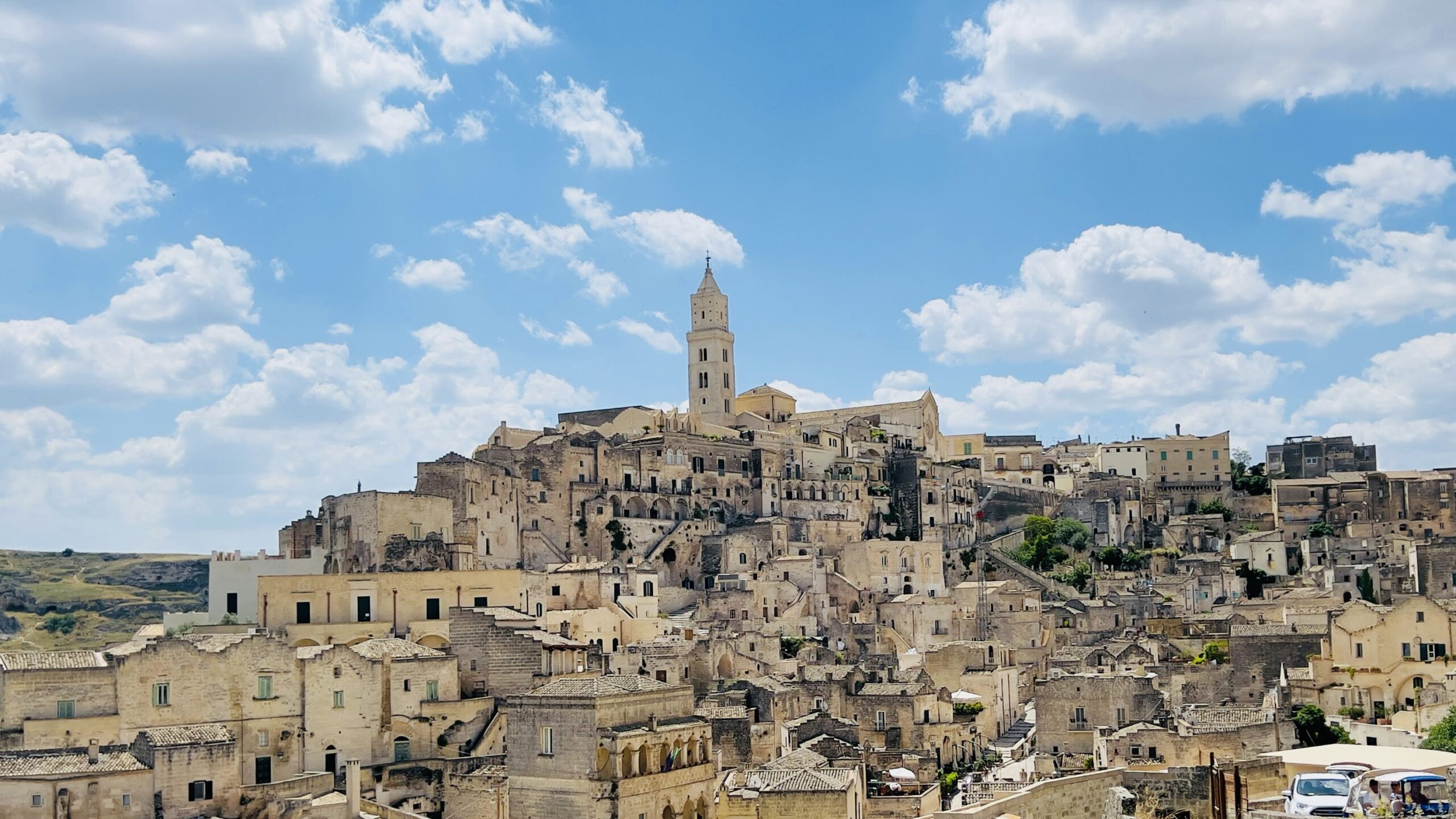
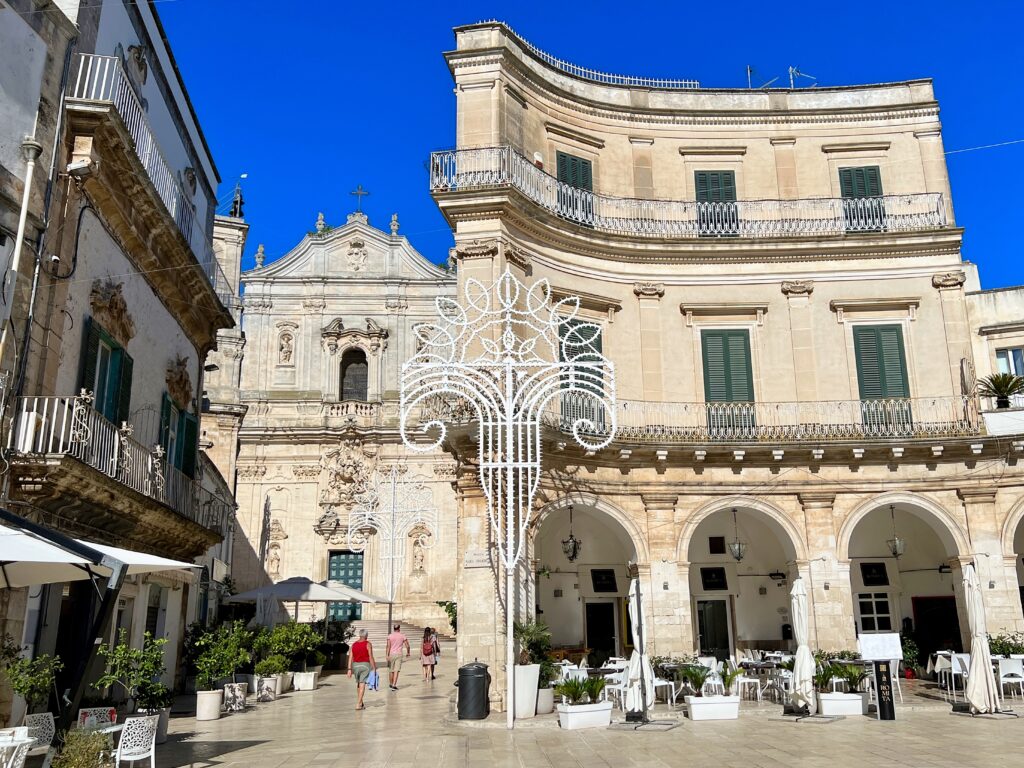
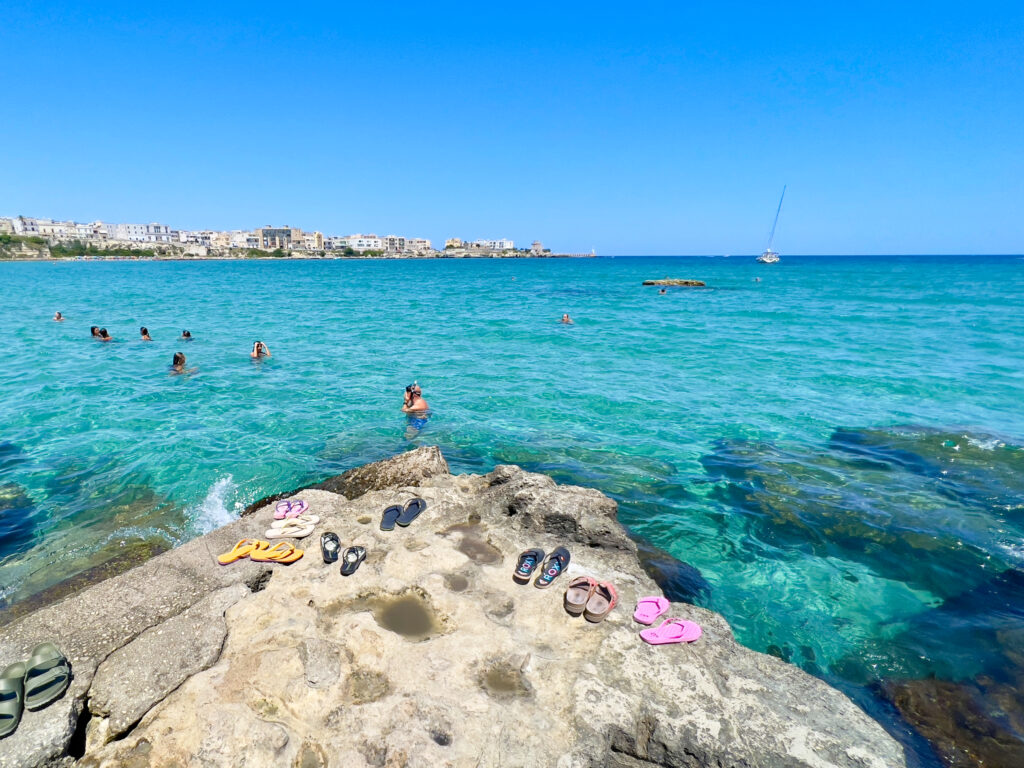
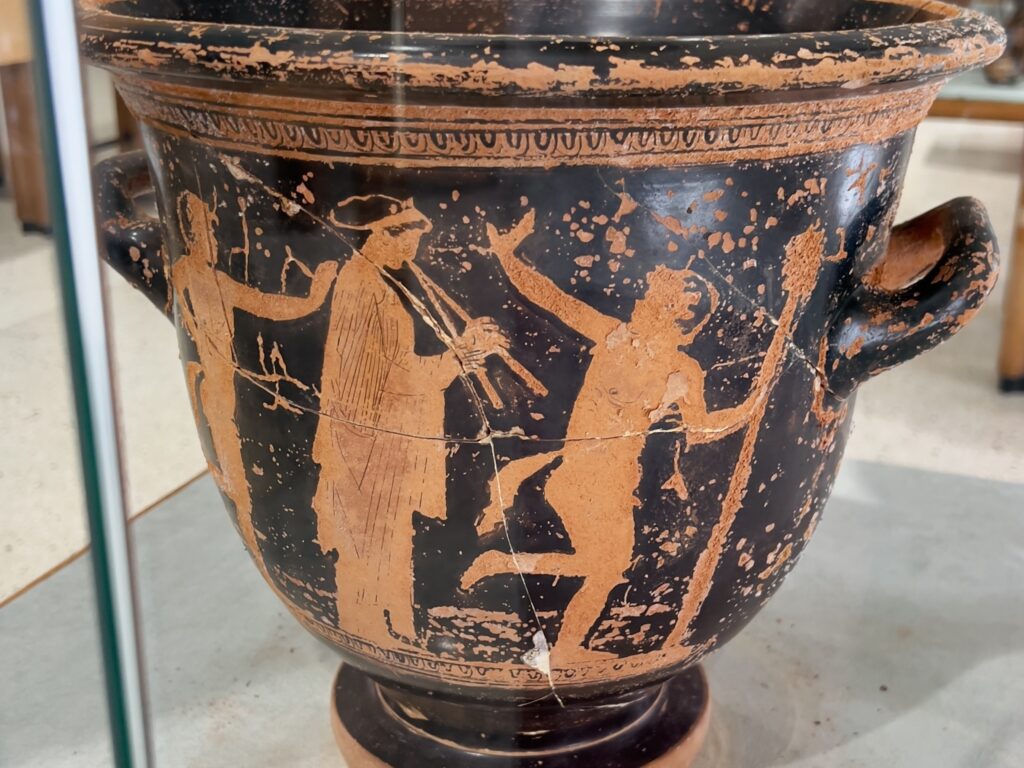
Hi we are heading over in April,we won’t hire a car.
But thinking of doing an organised tour from a local tour guide (in English) could you recommend any tour guides that would start the trip from Bari.
So much to see and public transport could take up a lot of time.
Ciao. Leanda.
Train links that connect Bari to Polignano a Mare, Monopoli, Brindisi and Lecce, Bari and Taranto, Bari and Matera and to Alberobello are modern, efficient and reliable. All the stations are central and we thoroughly recommend those train services.
Ostuni and Carovigno are on the same Bari – Lecce line, but the stations are out of town. Ostuni has connections, but that’s an extra layer.
Anywhere else by public transport can be cumbersome and require planning and patience. That’s why we recommend either a hire car or a group tour.
We always recommend Pietro of Puglialy for his small group tours (he arranges everything including collection from Bari or Brindisi airport and transfers). His tours are small groups and very popular so you should reach out to him as quickly as possible for travel in April. (Be sure to tell Pietro we recommended him to you).
On the subject of tours, if you are spending time in Bari, we have taken part in a couple of tours organised by Free Walking Tour Bari, a useful and friendly way of seeing around Bari.
Hope that helps. Buone vacanze,
Luigi M.
My girlfriend and I have just returned from our 2 week holiday in Puglia and had an amazing trip! We used the information on your website for the planning of our total trip and also the day trips and it was really helpfull! Thanks a lot for all great advice which contributed to our lovely experience! We have already sent the website to friends whom are in Puglia now!
Grazie. Thanks for the feedback. We are so pleased you had a great time in Puglia. There’s much to like here, and such great food!
LuigiM.
Hello, we plan to stay two nights in Matera towards the end of October. Do you have any recommendations of where to stay?
Also it is a big wedding anniversary so looking for a special restaurant that has good vegan options please.
Hi Carolyn
Matera is in the neighbouring region of Basilicata. We have a guide to Matera because it is an easy and recommended visit from Bari. But because its not Puglia we don’t have the same insider travel tips – none of our team are from there, so we can’t cover it with the same insight we have for our region. We’re a just for fun website project run, with no links to any official tourist organisation or business! We run the Puglia Guys project in our spare time because of our passion for our region.
In our region vegan food is usually easy to find. For example, Puglia’s pasta is usually made without eggs (historically too expensive to use in pasta, they were sold or exchanged for other food) and you can find simple sauces and very many sides that are vegan. We don’t know if the cooking traditions of Basilicata – especially with their pasta – are the same!
Buone vacanze, LuigiMax
Thank you very much for your response. Your website is great and we have enjoyed looking at it planning our holiday.
Grazie! Sorry we couldn’t be more helpful about Matera. But we have updated our guide with details of where we usually stay in Matera.
We will be arriving by car in Matera. Can you explain the driving restrictions in the city center? I believe our lodging is arranging a parking pass for us, but we will be rolling some luggage. Thank you!
Ciao. Matera is in the our neighbouring region of Basilicata, but we include it as a destination in our website as its only some 60km from Bari.
We think you are referring to the ZTL restrictions which are found in cities all over Italy. We will restrict our response mainly to that. We aren’t local enough to know about one way driving restrictions that apply in Matera, or any other local circulation issues.
You can read about general ZTL arrangements in Puglia here, these are not specific to Matera.
When we stayed at Sant’Angelo Luxury Resort in the heart of Matera’s sassi district, which was within a ZTL we gave our car license (registration number) in advance so our car was “authorised” to drive into the ZTL.
This will apply if your accommodation is within a ZTL.
If it is not and you are talking about general parking restrictions, that depends entirely on where you park. General information about parking can be found here. We know that Matera also uses a system in some places where permitted parking spaces are also allocated a specific number (painted in the ground). You need to take a note of that number and input it when taking a ticket from the pay parking machine.
For requirements specific to your accommodation and Matera specific issues, please contact your host for any further clarity of property specific requirements.
LuigiM.